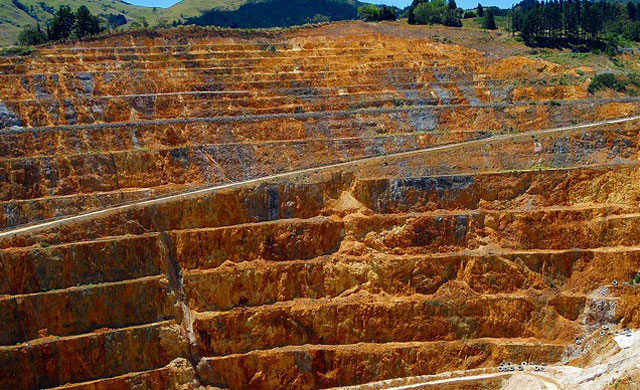Following its pre-set monetary policy, Bitcoin completed its 4th Halving at block 840,000, reducing block rewards from 6.25 BTC to 3.125 BTC. This significant event has far-reaching impacts on miner economics, mining pools, and the overall Bitcoin ecosystem. This week’s State of the Network explores the consequences of Bitcoin’s recent Halving, building on insights from SOTN Issue 255.

The Halving: A Nonchalant Reception
Bitcoin’s Halving, dictated by a fixed emissions schedule, is highly anticipated in the cryptocurrency space. However, it brings uncertainty: how will the mining sector cope, can transaction fees offset reduced rewards, and what will be the broader effects on the Bitcoin community?
Following the reduction to a 3.125 BTC block subsidy and the addition of 37.63 BTC in fees, ViaBTC earned substantial revenue by mining the Halving block, particularly due to the “Epic Sat.” The Ordinals protocol assigns a rarity rating to individual satoshis, and the first satoshi in a Halving block holds significant value, with only four ever mined in Bitcoin’s history.
The “Epic Sat” significantly boosted ViaBTC’s earnings, and subsequent blocks continued to generate record-breaking revenues. Excluding a notable “fat finger” fee mistakenly paid by Paxos (later refunded by AntPool), the top 20 blocks by total revenue (and 88 of the top 100) were mined on the first day of Bitcoin’s 5th epoch.

The Rune Saga
Since their introduction in 2023, Ordinals and Inscriptions have significantly driven miner transaction fee revenues. However, at the Halving block, a new metaprotocol emerged. The Runes token standard, another creation by Ordinals inventor Casey Rodarmor, was officially launched on block 840,000, sparking a fresh wave of on-chain speculation on Bitcoin.
Technically, Runes improves upon previous attempts to attach ERC-20-style tokens to Bitcoin. Initially designed for NFTs, Inscriptions were adapted to create “BRC-20s” by embedding JSON-formatted text into transactions. BRC-20s like ORDI quickly reached billion-dollar market caps and listings on major exchanges.
Despite their popularity, BRC-20s were criticized for bloating the blockchain and requiring complex indexing. Runes addresses these issues by using Bitcoin’s OP_RETURN field to encode compact token messages. Within 24 hours of its March 20 launch, Bitcoin set a new daily record of 518.6K OP_RETURN outputs, later surpassed by 798.7K on March 23.
The excitement around Runes was intense after the Halving, with 97% of fees in block 840,000 spent on early etchings. The creator of Rune 840000:1 tipped miners 6.73 BTC for the first slot in the Halving block, and “FEHU” now has a market cap of $2.4B. While Runes’ revenue has since declined, they still account for about 50% of fees per block over the past week.
Since the protocol’s launch on the Halving block, miners have earned 2,000 BTC from Runes fees, with nearly half generated in the first 24 hours. Although momentum slowed within five days, Runes continues to provide occasional revenue spikes with new projects. For instance, block 842,166 saw a four-hour fee surge as 50 million EPIC•EPIC•EPIC•EPIC tokens were minted.
Despite initial fee records, Runes has been dismissed as a failure, with interest waning. The Ordinals ecosystem took months to develop the necessary liquidity infrastructure, and Runes still lacks validation through major exchange listings, trading mainly on niche platforms. Miners face declining revenue, prompting a need to reassess future profitability assumptions.
Btc
Withering Hashes
Post-Halving, the mining industry income averages nearly $30 million daily, but this doesn’t account for rising electricity costs. Coin Metrics estimates the network now uses about 21.5 GW of power, double the amount from two years ago.
Mining revenue per megawatt (MRPM) is around $1.3K daily, just above the $960/MW cost of $0.04/kWh. This places electricity-adjusted revenue at levels similar to the post-FTX collapse, highlighting financial strains for miners. Larger operations fare better with upgraded hardware and lower power rates, but average miners face significant pressure.
A major concern is the selling pressure miners might exert on the market. To cover operating expenses or fund expansions, miners may need to sell newly issued Bitcoin or existing holdings.
Bitcoin’s daily issuance dropped from 900 BTC to 450 BTC after the Halving. Pre-halving, the $55 million issuance aligned with 1% ask liquidity, showing the market’s capacity to absorb miner sell-offs. With post-Halving issuance at $26 million, sell-side liquidity remains strong, suggesting a minimal impact on BTC price from miner sell pressure.
Financial pressure on miners has increased due to lower profits and rising electricity costs, as evidenced by an 11.2% drop in weekly hash rate from 650 EH/s to 577 EH/s. However, Bitcoin’s recent 5.62% difficulty adjustment—the largest since late 2022—will ease some pressure by reducing the mining workload.
Conclusion
Bitcoin’s issuance reduction is highly anticipated, but the 2024 Halving was notable. Mining has grown significantly, with large investments in hardware and infrastructure. However, fees fail to offset the drop in the block subsidy, raising doubts about the sustainability of large-scale mining operations. New protocols like Runes offer potential revenue boosts, but these markets are still developing, creating uncertainties in mining profitability.
Regarding Halving’s impact, it’s argued that the adjustment has been anticipated for years. Liquidity indicators show subdued miner sell pressure, with issuance below levels to affect the BTC price. However, the long-term effects are yet to be seen. Historically, Bitcoin’s significant appreciation often occurs months after a Halving. Currently, attention shifts to demand-side dynamics as Halving’s influence on the cryptocurrency narrative diminishes.
Learn from market wizards: Books to take your trading to the next level.

 Hot Features
Hot Features















